POZSGAI: THROWING AWAY THE KEY
No One Went to Prison for the Valdez disaster, but John Pozsgai is an environmental criminal?
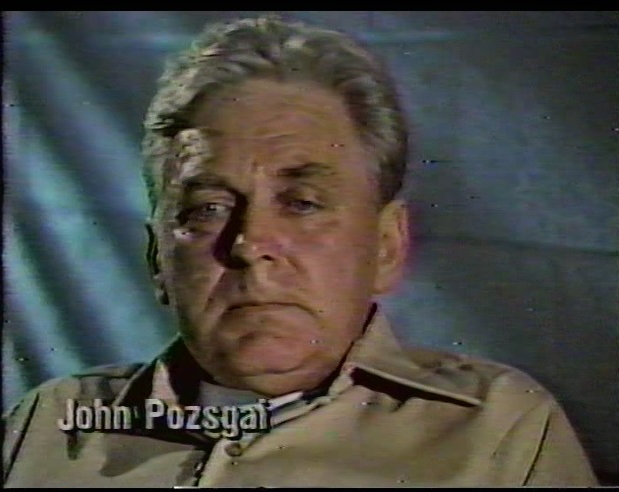
December 11, 1990
By Dan Gifford
Morrisville, Pennsyslvania -- John Pozsgai (pronounced pose-guy) dons inmate khakis and starts each morning in a federal prison lineup since Thanksgiving because he is now an environmental criminal, an enemy of the American political state.
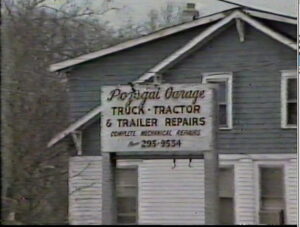
It's a change from the way he used to start the morning: grabbing a cup of hot coffee from his wife before heading out the back door of his Morrisville, Pennsylvania clapboard duplex to the back yard garage where he repairs trucks, seven days a week.

But that was before Jules, the owner of Jules' Tires, started calling Uncle Sam with claims that Pozsgai was destroying a wetland after hearing President George H.W. Bush's pronouncement that he'd tolerate no net loss of them. The real reason Jules did that, according to multiple locals I spoke with, was because Jules was hot to trot for John's daughter, Victoria, who wanted nothing to do with him. So Jules decided to screw her father instead with tattle calls to the Corps of Engineers and Department of Justice about Pozsgai.
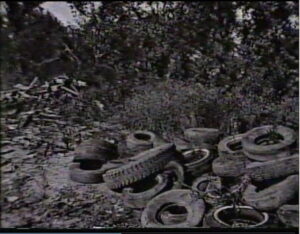
Jules had no comment about his unrequited passion for Victoria, but his comments to federal lawmen are a matter of public record. Pozsgai was going to build a new garage across the street from his present one on a 15 acre dumping ground full of old refrigerators, cars and the like next to Jules' place where he had dumped thousands of old tires himself over the years.
After pulling out the junk, Pozsgai began filling in the property with clean fill in order to expand his garage. But Uncle, having been given his presidential agenda, charged Pozsgai with everything but the proverbial federal statute kitchen sink. The result, Pozsgai and his small town family lawyer got hammered with 40 counts of violating the Federal Clean water Act. A federal court said the conviction was legit as did a federal Appeals Court by it's heinous silence.
Pozsgai's punishment -- three years hard time plus five more on probation plus a $202, 000 fine -- isn't the judicial nuclear strike United States Attorney Michael M. Baylson and Assistant U.S. Attorney Seth Weber had requested in their sentencing memorandum: they wanted 120 years years in jail and a $10 million dollar fine. But it will do for a case Solicitor General Kenneth W. Starr later told the U.S. Court of Appeals the government's evidence was "admittedly quite thin," in noting that the government was evidence "flawed."
How "flawed"?
It was so flawed that Starr had to tell the judges it wasn't true. That the government's photo allegedly showing water from Pozsgai's land flowing into the Trenton River didn't show that at all. But in what many attorneys have told me was an act of genius legal rhetoric, Starr argued that even though the evidence was not true, it's presentation was so compelling that the jury could have reasonably assumed it was true and that Pozsgai's conviction should stand.
It did.
So Pozsgai, the man who escaped the arbitrary judicial tyranny of Hungary's "show me the man and I'll find you the crime" communist judicial system, remained fucked in the American gulag.
Pozsgai's sentence was certainly aggravated by his gruff, old world attitude -- he allegedly defied 32 court orders and injunctions. "it's my land, I paid for it, I'm not hurting anybody and I can do what I want with it," he says in the thick accent of his native Hungary.
But the real issue in the Pozsgai case is reading George H.W Bush's lips: during his 1988 presidential campaign, Bush said, "No more net loss of wetlands," period. And as we know, the environmental president breaks no campaign promises. So the EPA feels it has a mandate to prosecute to the fullest extent of the law anyone who destroys a wetland.
With a few exceptions, of course.
Like big developers who bulldoze wetlands for golf courses or condos and have large legal staffs to help them through the regulatory maze. In fact, the only threat to the nation's wetlands the EPA seems to be prosecuting are people like John Pozsgai , who has an annual income of around $17,000.
Wading through a list of all 114 EPA criminal actions from 1983 through the end of 1989, Ashland Oil is the only readily recognizable company that jumps off the pages. That entry, for a 500,000 accidental oil spill into the Monongahela River in 1988, got the company a 2.25 million fine -- .02 percent of the company's reported 1989 earnings -- and no corporate officer went to jail.
Actually, the stiffest prison sentence given in an EPA case we could find was 5 years jail time -- reduced to six months and 2,000 hours community service -- given to Albert and Garo Mardikian of Mardikian Engineering, Inc which was running a mail fraud and false test data scheme to import cars that didn't meet Clean Air Act emission standards.
Generally, sentences for Clean water Act violations are even lighter. In New Hampshire, for dumping cyanide, barium and PCBs, among other hazardous items, into river and groundwater in 1985, , the K.W. Thompson Tool Company, also know as Thompson Center Arms, a maker of muzzle loading firearms, received a total fine of $75,000. Charges were dismissed against company officers who filed false reports about the dumping.
In Illinois, caustic chemicals were released into a Des Plaines River tributary in 1985 by Venus Laboratories via the city sewer system. Total penalty: a $10,000 fine.
Pozsgai's fine alone represents more than 10 times his annual income -- something no individual or polluting company, no matter how culpable, has ever received. A proportional penalty would crush Exxon, for example, with a fine of almost $30 billion, about twice its total assets.
Even wetlands cases seem to depend more on who you are than what you do. The $2 million in fines under the Clean Water Act that New York commodities dealer Paul Tudor Jones II recently received for filling some 86 acres of wetlands on his Eastern Maryland shore hunting retreat pales when compared to his approximate $100, million income. Even mote telling in the Jones case is wh0 the government is going after with major criminal charges, not Jones, but his land manager, a contract employee named William Ellen.
But with Pozsgai, everybody seems to be making a statement, even Judge Marvin Katz, who said the sentence would "serve as a deterrent to others who will undoubtedly be tempted by economic pressures to [break the law]."
That may sound like skewed priorities to some, but Jan Goldman-Carter, counsel to the Fisheries and Wildlife division of the national Wildlife Federation, doesn't seem to care. She says she speaks for many who are so upset at the annual 450,000 acre loss of wetlands that "they're just glad to see the EPA enforcing anything."
"Wetlands cases are rarely against big guys," says Jeff Miller, an environmental law professor at New York's Pace University, Paul Kamener of the Washington Legal Foundation, offers a reason for that for that and his client's troubles: "It's an easy hit" he says.
Environmental Defense Fund attorney Tim Searchinger backs that up. He points to "terrible lapses in EPA and the Corps of Engineers enforcement" and notes that 'routinely, large developers around the country are filling in wetlands without a permit and without fear of prosecution."
But the "no net loss of wetlands" rule is having unintended consequences across the country. Mark Maslyn of the American Farm Bureau Federation says there's "chaos" among farmers being prevented from farming land that's often been worked for generations. In Colorado, a man is being sued by the Corps of Engineers for repairing an existing dike to keep his home from flooding. In Florida in 1989, a father and son were put in prison for 21 months for putting sand in a ditch on their quarter acre subdivision lot -- a ditch that was breeding mosquitos (a serious health concern with the outbreak of mosquito-transmitted encephalitis.)
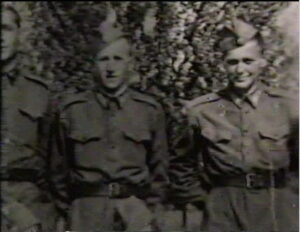
But having company in misery is little comfort for John Pozsgai. Pozsgai is in the United States because of a previous brush with authority. Old photos show him as an 18 year old Red Army tank mechanic -- a forced draftee, he says -- who chose desertion rather than service the Soviet machinery running over his countrymen during the 1956 Hungarian uprising.

Later that year, he and his wife, Gisella, who fled Hungary at the same time, settled in Morrisville, near Trenton., where Pozsgai worked in the International Harvester plant for 20 years until it folded in 1980, leaving him unemployed. That's when his backyard truck repair sideline became a full time -- bringing in about $17,000 year, barely covering living expenses for a family of four.
Victoria Pozsgai says her father worked as many as three jobs to earn the money that put her older sister Gloria through Rider College and put her through Temple University for a journalism degree; a trade she's had a hard time practicing, she says, claiming local newspapers fired her over her father's case. "Daddy worked from about five in the morning until midnight seven days a week as long as I can remember," she says.
She also recalls strained relations with the neighbors and townsfolk. Some didn't like having a "commie" around, others didn't like the accent and often used the derogatory "hunky." But most probably didn't like Pozsgai's undiplomatic, blunt manner and single minded devotion to hard work. "People would often make jokes about him working so hard ... especially the late hours spend at the garage."
The garage is an older, tin roof building with a weathered board exterior and a grimy interior that can only handle one truck at a time. But right across the street sat 15 acres of land that was up for sale, an ideal spot for expansion. The absentee owners didn't use it and had been letting Pozsgai cut firewood and park trucks on the property for 18 years.
Building a new, larger garage meant adding to fill dirt that had been dumped on about a third of the property during the past three generations. I also meant cleaning up about three generations of of accumulated junk: old tires, refrigerators and so on that had flowed over from a next door junk yard as well as from illegal dumpers who happened by.
After floating loan applications around April of 1987, Pozsgai started pulling out the junk and letting local contractors know that clean fill could be dumped there for free. Trucks would would roll up whenever they had a load; a nursery dropped topsoil on the surface. The government says Pozsgai ultimately brought in some 12 feet of fill -- though close examination of the property more like six feet of fill on five acres nears the main road. Pozsgai claims that since he bought the land in July of 1987, he has added only about a foot of that.
But somebody had called the U.S. Army Corps of Engineers in April of that year and said Pozsgai was ruining a wetland. That brought a swift response from Corp inspector Martin Miller, possibly because he had read the lips of his Commander in Chief. No net loss of American wetlands. Period.
Miller built a wetlands case by citing the presence of "wetland" vegetation, like skunk cabbage and sweet gum trees. Both are common in the eastern third of the United States. Other evidence noted water levels within a foot of the surface, measured by government soil borings on April 28, 1987, and the stream running along the edge of the property into an oily ditch called the Pennsylvania canal. From there, the government claimed , the water flows about a half mile and joins with the Delaware River.
Considering the "waterway" and its possible use in interstate commerce, Pozsgai's actions were a violation of the Clean Water Act and its prohibition against polluting navigable waters, the government said.
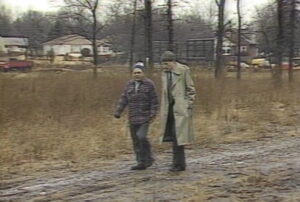
"There's no way this land is any kind of wetland." Pozsgai is indulging in a bit of blue collar wisdom as we stroll the property together. Looking around, there's no mistaking this for an Everglades or bit of classic eastern Pennsylvania watershed harboring endangered species; just 15 acres of flat and ugly bordered on three sides by raised highways, the soil packed solid beneath the feet.The fourth side, across a small stream that originates as neighborhood runoff, fronts a time shop and some apartments set back about 75 feet (some claim Pozsgai's fill caused these apartments to flood, though he says they flooded before any new fill was added). Beyond the apartment building are woods that extend to the raised highway that marks the rear boundary of the property. The banks of the property are littered with some tires, an old easy chair and other debris. It's raining the day we're there, so the land is indeed wet.
"If that place is a wetland, there's a good chance every mud puddle in the country is a wetland," says Dr. Wendell Kirkham, a retired U.S. Department of Agriculture soil scientist now teaching at Rutgers University. His comment isn't made lightly. His study, taken over the course of a compete year using the "Connecticut wetlands evaluation method" -- which evaluates 14 functional values for everything from wildlife and fin fish habitat to groundwater and visual/aesthetic quality -- came to the conclusion that the land should be rated "very low quality."
Wetlands are generally defined as marshes, swamps, bogs bayous and other areas containing a high proportion of water in the soil. Besides being animal and fish habitats and breeding grounds, these areas control runoff from adjoining areas, breaking down many toxins in the water as it's absorbed into the ground to recharge to recharge aquifers. In addition, wetlands give off and absorb gases that are necessary to maintain atmospheric balance.
Regulatory definitions matters sound as simple as a litmus tests. A wetland has to have at least 50 percent of its vegetation in each category of "wetland" plants. The land has to have a water table that's with 12 inches of the surface during the growing season. And the property has to have certain specific types of "hydric' soils. If any of these elements are missing, it's, legally speaking, not a wetland.
"Defining a wetland is as much art as it is science" says Michael Wardell, for 16 years a court recognized wetland expert familiar with the Pozsgai property. Wardell notes that all the legal and technical components of a wetland may be present, but is the property functioning as a wetland? Has the area always been a wetland? Where did the water come from? Why does the water stay once it gets there?
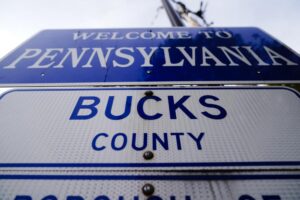
"I know for a fact that piece of land was a junked-up cesspool of a swamp ... full of old tires, junk cars and oily runoff from a nearby Conrail yard," says Carl Leveau, former editor of the Bucks County Courier Times and no fan of Pozsgai's or Morrisville. The former, he claims, chased one of his reporters with a car. The latter he calls the "armpit of Bucks County."
Michael Wardell says the property was "wetland" because of the 7,000 old tires and other junk kept any water that flowed onto it from draining off. So when Pozsgai cleaned up the junk, the land dried.Oddly enough, bulldozing a marsh and destroying a "wetland" in the process is OK under the Clean Water Act, according to Wardell. That's being done by large developers all over the country. But putting something onto a wetland is verboten. "It's a loophole in the law," Wardell says.
No matter, the call that brought Army Corps of Engineers inspector Martin Miller by on April 28, 1987, started a chain of events that ended with John Pozsgai's arrest on September 12, 1988, for dumping dirt without a permit and violating injunctions against further dumping.
Pozsgai claims he did comply with the injunctions, but that trucks kept right on dumping even after he put out the word to stop. Beyond that, he feels the government had no business trying to tell him what to do in the first place, whipping out a building permit issued by the state of Pennsylvania for construction of a 15,000 square foot garage/warehouse building on the site.
As for the permits, both Pozsgai and daughter Victoria say the made "numerous attempts"to find somebody who understood the permitting process, according to court briefs. But engineering firms said they would have to do expensive studies costing more than $15,000, something Pozsgai couldn't afford.
The permit process is long, expensive and complicated -- with complex negotiations and tit for tat arrangements. For instance, the Corps of Engineers or the EPA may say so much filling of of one wetlands area is OK, in return for reclaiming an equal amount somewhere else.
The idea there is to maintain the no net loss of wet lands policy announced by the Bush administration. But "no net loss is a very, very complicated ledger" when kept that way, says a management staffer for the Wetland Newsletter. It's so complicated, in fact, that the John Pozsgai's among us usually throw in the towel. "When that happens, many little guys will go ahead with their plans."
At that point, Professor Miller believes, the enforcement process deserves criticism. "Wetlands provisions are not enforced uniformly." Not only are some regional offices more aggressive than others, he says, "permit violations tend to be handled by civil action while others are handled by criminal prosecution." The result: actions against industry biggies are anemic compared with government behavior toward little guys.
For John Pozsgai, that behavior more closely resembled persecution than prosecution: a hidden time-lapse camera recording of the dumping made from a neighbor's house, a gunpoint arrest (according to Pozsgai -- the feds say their guns were holstered), and a search of Pozsgai's home and business by EPA agents for unspecified "weapons." There were none.
Finally, Victoria said she saw a story in Forbes about a developer with wetlands related legal problems. She called him and he suggested the Washington Legal Foundation. Legal Foundation, a conservative, non profit organization that agreed to handle Pozsgai's case without charge.
The Washington legal Foundation itself a "pro-free enterprise" advocacy group. It's an organization not many environmentalists would probably be comfortable with, more likely representing the interests of businesses than "greenies." The Foundation's board of advisers lists John Sununu and the vice-president of the United States, among others.
After the Foundation's Court of Appeals petition was rebuffed, it asked the United States Supreme Court to hear the case.
The Court refused even after reading Soliciter general Kenneth Starr's surprising admission that evidence supposedly proving federal jurisdiction over Pozsgai's land was never presented and the photographs prosecutor's claimed showed the small runoff stream emptying into the Pennsylvania Canal didn't show any such thing. "The record is admittedly quite thin with regard to the two elements needed to establish jurisdiction over the wetlands site, " Starr said.
But, and this is a big "but," he noted Pozsgai's verdict should be upheld because the Court and the jury could have "reasonably inferred the evidence to be true." (See below: JOHN POZSGAI, PETITIONER V. UNITED STATES OF AMERICA)
As John Pozsgai settles into his prison routine, perhaps another inference can be made. The environment can rest easy; the system can be proud; John Pozsgai has been bagged.
"It is true that the government did not offer direct evidence that the stream on petitioner's property flowed into the Pennsylvania Canal, or that the Canal had been used in interstate commerce. There was, however, evidence from which the jury could have inferred both facts."
JOHN POZSGAI, PETITIONER V. UNITED STATES OF AMERICA No. 89-1735 In The Supreme Court Of The United States October Term, 1990 On Petition For A Writ Of Certiorari To The United States Court Of Appeals For The Third Circuit
https://www.justice.gov/sites/default/files/osg/briefs/1990/01/01/sg900938.txt
###